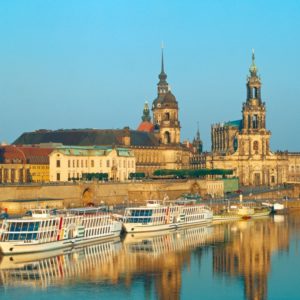Video courtesy of Germany.Travel Tourism
Germany has a long, complex history and rich culture. Among the many outstanding German authors, artists, architects, musicians, and philosophers, the composers Johann Sebastian Bach and Ludwig van Beethoven are probably the best known throughout the world. From the ever changing Baltic coastline and the lake of Mecklenburg to its medieval cities and fairy tale villages, Germany truly has something for everyone.
Munich is Germany’s good-time city, its image indelibly tied to a series of celebrations that have spread the city’s fame far and wide. Schützenstrasse marks the beginning of Munich’s pedestrian shopping mall, the Fussgängerzone, with over a mile of shopping.
Just outside Munich, Bavarian artists worked for almost a full century to create the Nymphenburg Palace together with its elegant gardens which comes alive with popular concerts during the Summer Festival. The palace grounds, are home of the Museum of Royal Carriages, the Hunting Lodge and the Porcelain Museum.
Formerly the pride of Imperial Berlin, the massive 18th Century Brandenburg Gate is now the symbol of German reunification. In West Berlin, you can visit Check Point Charlie Museum, the formerly notorious meeting point of East and West. You can also visit Charlottenburg Palace, this gorgeous palace served as a city residence for the Prussian rulers.
Potsdam, just outside of Berlin, is a fascinating city of contrasts where Prussian kings made their fantastic summer homes and where the Potsdam Agreement was signed in 1945. You can visit the fantastic “Sans Souci” (without worry) Gardens where Frederick the Great and German rulers made their summer homes. The main garden, created in the 18th and 19th centuries, is a maze of the three smaller and elegantly kept gardens, where the paths are studded with Greek and Roman statues. Cecilienhof Castle, built in the early part of the 20th century served as an important place in world history when the Potsdam Agreement was signed here in 1945 by Truman, Stalin and Churchill. It is said that each party had a private entrance to the castle so that no one party would know the arrival time of the others.
With its French and Italian influences, Dresden proved to be one of Europe’s leading and most beautiful residential cities. At the turn of the last century, Dresden blossomed into a metropolis with 517,000 inhabitants by 1905.
Showing the single result
Need Assistance?
800-227-5317 | sales@pacific-destinations.com
Tell us where and when you want to go and we’ll give your request our immediate attention! No high pressure sales, just straight talk and sound advice!

